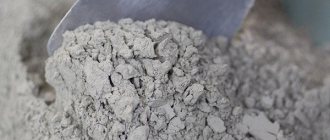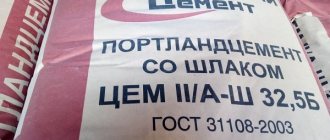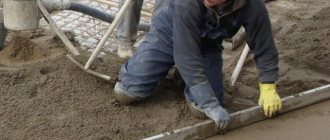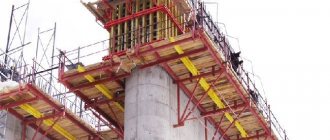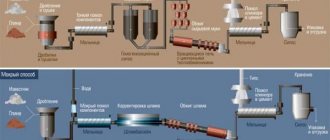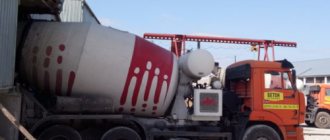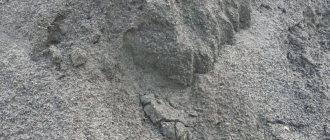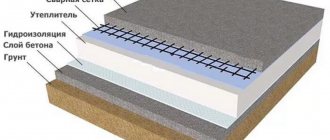Concrete is the basis of most building structures today. It is widely used in the field of capital construction, in the manufacture of monolithic fencing, pouring foundations for various buildings, in the creation of floor slabs, strengthening dams, load-bearing beams of bridges and other works. The quality of the mixture will determine the service life and safety of structures.
The mixture consists of solid aggregates, water and cement. The main task of the last ingredient is to fill the space between solid fractions. In addition, cement holds the elements together. But plasticizers help increase the adhesion and fluidity of the concrete mixture; they are liquid or powder additives.
Reviews about technical characteristics
The above-mentioned plasticizer is produced in the form of a powder or a 36% water solution. The composition does not change its qualities, even if the temperature rises to 85 °C. As for the minimum threshold, it reaches -40 °C. Consumers emphasize that the mixture is fire and explosion-proof. It is in demand in industrial facilities that produce concrete mortars, slabs, structures and self-leveling floors.
According to buyers, using a mixture that includes superplasticizer C-3, you can get perfectly smooth and impact-resistant surfaces. This material is used in monolithic construction, in the production of dry building mixtures and in the molding of paving slabs. Consumption per 100 kg of cement is approximately 0.5 kg. It can be increased to 0.7 kg.
Consumers emphasize that this composition belongs to the third hazard class, which indicates that craftsmen need to use personal protective equipment during work, namely goggles and gloves. It is recommended to store the material at temperatures above 0 °C. Superplasticizer S-3, the price of which is 65 rubles. per kilogram, can be used for the manufacture of prefabricated structures, they are based on concrete grade B45 and higher. The additive is successfully used as an ingredient in concrete, which forms the basis of reinforced concrete pressure pipes.
Plasticizers for concrete mix: what is it?
Modifying additives are a liquid or dry composite that, when dissolved in water, forms alkaline or neutral compounds. These can be compounds of organic or inorganic origin that serve to control and regulate the state of cement mixtures during the process of hydration and hardening.
Modifier additives can be obtained by processing cellulose concentrates and industrial waste from the following enterprises:
- forest chemicals;
- agrochemical;
- petrochemical production, etc.
The most common type of plasticizing additives are surfactants. Almost the entire range of existing modern modifiers is produced on the basis of these substances. The most effective of them are superplasticizers and hyperplasticizers.
By influencing the processes occurring in the structure of the mixtures at the initial stage of laying, they change the deformation properties of cement systems and help reduce water consumption, which subsequently has a positive effect on the quality of the crystalline structure of concrete.
Reviews of distinctive features
The technical characteristics of the described substance are expressed mainly in the fact that it gives concrete mobility up to the P-5 level, while the strength can be reduced to 5% or less. This is acceptable. Using a plasticizer, water resistance up to W 12 is achieved, which consumers like.
The design becomes sulfate-resistant and resistant to the effects of dilute acids. They become frost-resistant. Consumers especially emphasize that the C-3 superplasticizer is compatible with other concrete additives, among them the following should be highlighted:
- air-entraining;
- slowing down;
- anti-frost;
- reinforcing;
- accelerating.
As for economic indicators, consumers especially emphasize that the substance can help save cement. This plasticizer is introduced into the mixture in a volume ranging from 0.3 to 1.2% by weight of cement. However, usually the maximum dose does not exceed 0.8%.
The product is produced through organic synthesis, which takes place in several stages. Moisture may be contained in the composition up to 10%. Consumers emphasize that the substance is moderately dangerous. It has a specific smell and light brown color. Its bulk weight varies from 650 to 750 kg per cubic meter. The material dissolves almost immediately in clean water under normal conditions. If you provide stirring, the dissolution will go faster.
EDV for combat veterans from February 1, 2022
After indexation, the monthly cash payment to combat veterans is as follows:
- RUB 3,481.85 upon refusal to obtain NSO;
- 2168.42 rub. while maintaining the right to use benefits.
In case of partial refusal of the social package, the amount of EDV for combat veterans from 02/01/2022 will be determined in accordance with the table:
Features of application
If you decide to use superplasticizer S-3 when preparing concrete, you should study the instructions for its use first. The powder is mixed with sand and cement in dry form. However, you can add it to a concrete mixer with water during mixing.
The liquid composition, which is a powder combined with water, should be brought to a concentration ranging from 15 to 39%. The final value will depend on the requirements for the technology. In the form of a solution, the additive in the appropriate consistency is combined with concrete, adding simultaneously with water. However, you can add the ingredient after adding liquid.
Disadvantages and advantages
Plasticizer S-3 has many advantages. The most important of them:
- Increases the convenience of working with concrete - it does not stick to the form, it is easier to handle various actions - mixing, placing in formwork, etc.
- Safety. The material does not corrode the eyes and does not have a pungent odor.
- Prevents concrete mortar from cracking in winter.
- Improves the uniformity of the concrete mass.
The material does not have many disadvantages, but they do exist: the use of a plasticizer increases the hardening time of concrete. Because of this, the construction period of the structure may increase. But this problem can be easily solved: it is enough to add a hardening accelerator to the solution, and the disadvantage of using the additive will be compensated.
At the same time, extending the hardening time can also be an advantage: thanks to slow setting, it will be possible to transport ready-made concrete to a construction site located far from the place where the mixture was prepared.
Additional recommendations for preparing concrete
Superplasticizer S-3 is mixed in one packaging container. If you decide to use a liquid additive, then per 100 kg of cement you will need approximately 0.5 liters. This amount of material can be increased to 1 liter for the same 100 kg. This is true for moving concrete, which will be used in the construction of floors, walls, and floor screeds.
For self-compacting concrete, approximately 2 liters of plasticizer should be used. In this case, we are talking about mixtures that will be used to fill molds for monolithic and complex load-bearing structures made of reinforced concrete. With this ratio, you can obtain a composition that will be used when pouring the foundation. By adding superplasticizer C-3, the characteristics of which were mentioned above, in larger quantities, you ensure longer hardening of the concrete.
Benefits of the supplement
The concrete into which the additive was introduced has a number of undeniable advantages:
- reduced cement content in the finished mixture;
- increased strength and fluidity;
- improved structure.
The adhesion of the monolith to the reinforcing bars increases and it becomes possible to regulate the hardening time.
Additional information about consumption
If the concentration of the plasticizer in the initial mixture should reach 0.5%, then, recalculating this value, you will get 0.5 kg per 100 kg of cement, which is true for a completely dry additive. In this case, the consumption of a 35 percent solution will be equal to 1.43 kg. This value can be obtained by multiplying the amount of additive by the volume of cement, and then dividing this value by 35%.
The additive superplasticizer S-3 can only be used if the proportions are observed. In liters the above value will be 1.2. It can be obtained by dividing 1.43 by 1.192. The last value is the density of the 35% plasticizer solution. If you plan to prepare a plasticizer solution from powder, you should definitely use the dosage indicated on the package. To do this, take 2 parts water and part powder. In order to achieve a homogeneous plasticizer solution, the composition is diluted in warm water and then left for several hours.
EDV for disability from February 1, 2022
From February 1, 2022, the monthly allowance for disability will increase by 8.4%. Taking into account this increase, payments will be:
- disabled people of group 1 – 4430.70;
- disabled people of group 2 and disabled children – 3164.22;
- disabled people of group 3 – 2533.00.
But what will happen if a disabled person does not refuse NSS, but wants to receive a set of social services? What will be the payment then? Let's explain in the table:
Feedback on the scope of application
Consumers love that the superplasticizer acts as a versatile additive. With its help you can change the properties of the concrete mixture. In addition, the substance allows you to control the process of hardening and installation. Superplasticizer S-3, the consumption of which was mentioned above, allows you to increase the mobility of the mixture. According to consumers, in this case the mixture is convenient to lay, no voids are formed, and the mass hardens without cracks and evenly.
The plasticizer reduces the volume of water. This approach increases the strength of concrete by 25%, while the mixture remains mobile. The use of superplasticizer S-3 allows you to save up to 22% of its volume on cement. In this case, the strength of the solution does not change. The material can ultimately turn out to be waterproof and quite dense, because the amount of water is minimal.
Plasticizer composition
Superplasticizers are classified according to several criteria: by the chemical composition of the substances and by the principle of action (steric or electrostatic).
There are modifiers based on the following substances:
- melamine formaldehyde polycondensate;
- sulfonated naphthalene formaldehyde polycondensate;
- lignosulfonates;
- polyacrylates;
- polycarboxylates.
A classic superplasticizer (C3) is a substance that affects the cement structure by electrostatically repelling the binder grains.
It contains the following compounds:
- sulfonated polycondensate (80%);
- sodium sulfate (7-10%);
- water (10%).
Hyperplasticizers are new generation additives. The main principle of action of additives is a large steric effect, which is twice as strong as that of plasticizers.
Hyperplasticizer for concrete mixture.
Motors
Common problems
In Russia, the model is presented mainly with two versions of the 1.4 engine, in 8- and 16-valve versions, with versions with a 1.6 gasoline engine in second place in popularity. Cars with 1.1 engines, and especially diesel ones, are rare here.
The layout of the engine compartment is quite dense, so that even small engines fit with difficulty; 16-valve engines, both diesel and gasoline, are already quite difficult to maintain.
The relatively small area of radiators makes it necessary to carefully monitor their cleanliness, especially on cars with air conditioning. The service life of the crankcase ventilation system hoses on cars before restyling is usually already exhausted; their condition needs to be checked.
If you see a sparkling clean engine compartment, refuse to buy. It cannot be washed, there is a BSM unit located here, which really does not like moisture, and any cleaning can end in failure. So if the engines are leaking, it is better to clean them with special compounds, and only on the timing side can you clean them with steam.
The service life of the engine mounts on all modifications is short, so try to feel the vibrations and check the rubber bands for cracks.
The somewhat paranoid control system of gasoline engines is ready to issue an Antipollution Fault in case of any failures with the control system, which does not add joy to the owners and usually requires frequent use of a diagnostic scanner and the FAP program to understand what is wrong with the engine this time.
Most often, the errors are insignificant; it is enough to reset them and not think about them for another ten thousand kilometers. And in the absence of a scanner, you will have to put up with slightly increased fuel consumption and decreased dynamics.
Gasoline engines
The main engine for the C3 is the 8-valve 1.4 TU3A/TU3JP. This is a simple and reliable engine with a cast iron block, timing belt and distributed injection. Instances that have traveled 300+ thousand without major repairs are not at all uncommon, but on the Russian market the mileage is usually rolled up, so you usually won’t see “scary” numbers on the odometers.
The condition is highly dependent on the care of the control system. Dirty injectors, air leaks, old ignition module and old wires seriously harm the engine and affect its service life. But serious wear of the piston group is usually observed only with 250+ miles and very poor maintenance. And even in this case, it’s okay - the choice of used units is still very wide.
Ignition module
4,681 rubles
The sixteen-valve version of the 1.4 engine of the ET3J4 series and the structurally similar 1.6 engine TU5JP4 differ from each other minimally, but the ET3 also has an intake shaft phase regulator and associated changes in the design of the camshaft and cylinder head.
In general, these are also very strong engines with a service life of 300+, but they are more powerful, more complex, and under the hood of a small Citroen they are more prone to overheating. The ignition module is more expensive and causes more failures, the crankcase ventilation system is more loaded, and the timing belt is predictably more complex. Engine mounts wear out faster.
However, the increase in complexity pays off with increased power and dynamics, with the same fuel consumption, and with a 1.6 engine, the light car feels almost like a lighter.
Diesel engines
In Europe, the Citroen C3 is popular with diesel engines, but here they are represented by single copies, less than 2% of the population. 1.4 diesel engines are the DV4 series, and 1.6 engines are the DV6 series.
The lowest-power options are 8-valve DV4TD 68 hp engines; they were installed from the beginning to the end of production, slightly modernized in 2005. After restyling, the more powerful 16-valve DV4TED4 with 90 hp was replaced with a slightly deformed version with the index DV6ATED4.
All engine options after restyling with a particulate filter. The fuel equipment is 8-valve 1.4 Bosch, 16-valve 1.4 and 1.6 Delphi, and the latter is considered more expensive to maintain. All engines have a very poor location of the fuel filter and a very tight layout in the engine compartment.
1.6 engines have problems with injector seals, corrosion of cylinder liners, and the fuel equipment is more delicate than that of 1.4, and the turbine is more expensive. But it is with the 1.6 diesel engine that the Citroen C3 has the best dynamics, especially since the engine can be boosted relatively painlessly from a base 109 horsepower to 160 and higher.
| Detail | Original price | Non-original price | Non-original price 2 |
| Engine | |||
| Radiator | 6 709 | NRF 4 570 | AVA 3 288 |
| Timing repair kit 1.6/1.4 | 3 458 | Contitech 3 448 | Dayco 3 629 |
| Timing belt 1.6 | 1 221 | Bosch 948 | Hutchinson 1 762 |
| Ignition module | 4 681 | Hella 3 504 | Startvolt 2 667 |
| Oil pump 1.6 | 5 447 | Kolbenschmidt 5 173 | BGA 3 791 |
| Pump 1.6 | 2 457 | Airtex 1 236 | Hepu 2 071 |

